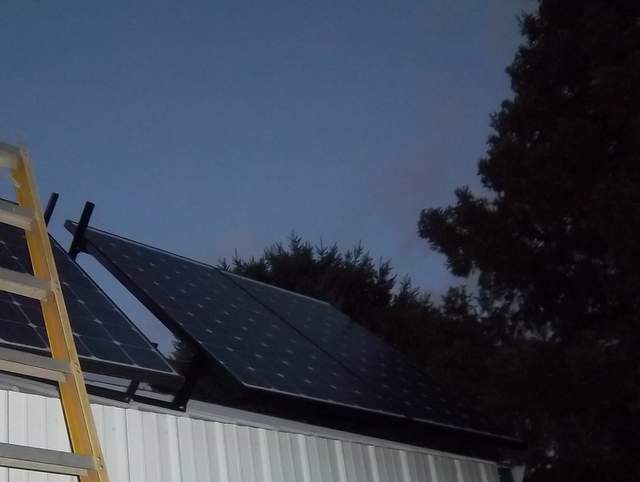I built the heating panel. It has a steel corrugated collector.
The solar panels are mounted on a building with a steel roof. They cause no wear on the roof. The panel frames are bolted to the nailers that run between the trusses with 10 lag bolts on each frame (each frame holds a pair of panels. Nothing moves even in the strongest wind. And if the wind is going take those panels it's going to take the roof with it.
This is our latest pair (the ones on the right). There was just room left on the roof for this last pair I put up. Just got 'em slid in the rack at sundown tonight

The sidewalls on the building are 10 foot so it's easy to reach them with a snow rake from the ground, and the bottoms of the panels hang over the eave so the snow can slide off onto the ground and doesn't pile up on the roof at the bottom of the panels when it slides off.
I got one more notch to raise them yet for 75 degree tilt, but I won't do that until November.
--
Chris